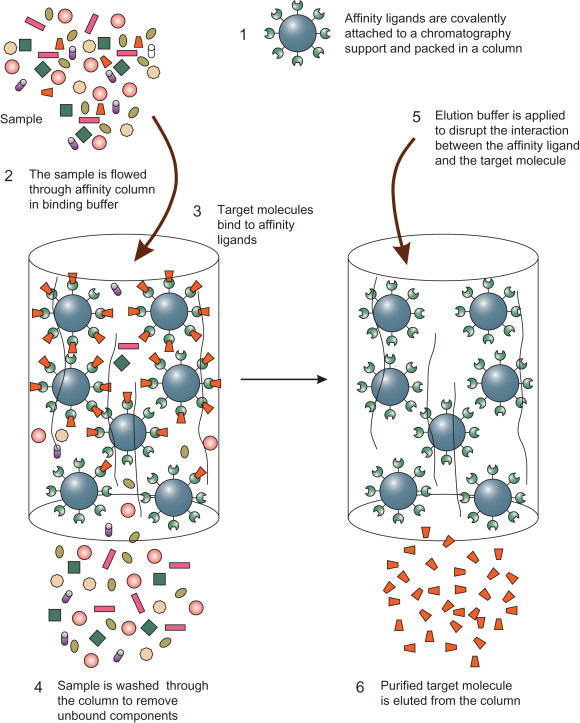Membrane and Membrane Protein Extraction
Online InquiryCreative Proteomics provides membrane separation and purification services for samples related to animal tissues and cells, which can accelerate your further research on membrane protein.
The membrane refers to a semi-permeable membrane that surrounds the cell surface and is mainly composed of membrane lipids and membrane proteins. It is a barrier that prevents extracellular substances from entering the cell freely and ensures the relative stability of the intracellular environment, and at the same time promotes the removal of waste and energy transfer. The membrane participates in the formation of a special surface structure formed to adapt to a certain environment. The exchange of materials and information between cells mostly depends on the mediation of special membrane proteins on the membrane of the cell, and once the membrane protein changes or is defective for some reason, it may lead to impediment of information transmission between cells, and then cause their respective diseases. In order to deeply study the structure, content and post-translational modification characteristics of membrane proteins, and to clarify and analyze the functions of proteins and the characteristics of exerting physiological effects, the separation and purification of membrane proteins is necessary.
Advantages of Our Membrane Separation and Purification Services:
- The membrane can be extracted from a variety of samples including mammalian tissues and cells.
- Extracted total cell membrane proteins, and also specifically purify membrane proteins.
- Obtained membrane proteins with high purity.
- The sample processing process is relatively simple and time-saving, which improves preparation efficiency of sample and gains great repeatability.
- Membrane proteins prepared extracted from it can be utilized in a variety of applications.
- We will definitely speed up the experimental test progress to ensure your experimental needs.
We Provide the Following Services, including but not Limited to:
- Integral membrane protein separation and purification
- Peripheral membrane protein separation and purification
- Membrane protein extraction
Methods of Membrane and Membrane Protein Extraction:
1. Integral membrane protein separation and purification
Separation of integral membrane protein requires extraction of biofilms containing the protein of interest before purification. Integral membrane protein was generally separated by using detergents or non-polar solvents, which are based on the characteristics of the integration of integral membrane proteins and membrane. Our platform provides methods for purifying integral membrane protein including density gradient centrifugation, ion exchange chromatography, gel filtration, lectin chromatography and various forms of affinity chromatography, but affinity chromatography is more commonly used. Affinity chromatography is a method of purifying membrane proteins by utilizing the highly specific ligand and receptor binding characteristics of membrane proteins. Chromatography uses membrane protein size and charge differences to purify membrane proteins.

Affinity chromatography mainly utilizes the feature of highly specific binding between target protein and ligand. The ligand is immobilized on a specific chromatographic column, and the protein that cannot specifically bind is washed away with a binding buffer. Finally, the target protein and the ligand conjugate are eluted with an elution buffer to separate and purify the membrane protein.
2. Peripheral membrane protein separation and purification
Separation of peripheral membrane protein requires extraction of biofilms containing the protein of interest before purification. Peripheral proteins can be easily separated with the help of polar reagents, such as solutions with increased pH or high salt concentrations, which are based on the characteristics of the integration of peripheral membrane proteins and membrane. Its purification method is the same as the integration membrane protein described above.
3. Extraction of membrane proteins
The separation of membrane proteins is divided into two steps. In order to separate intact integral membrane proteins from the membrane, detergents or non-polar solvents are required. However, peripheral proteins can be easily separated with the help of polar reagents, such as solutions with elevated pH or high salt concentrations. Lectin affinity chromatography can effectively separate and purify membrane-associated glycoproteins.
Delivery
Test design, purity analysis report, extracted membrane and purified protein sample.
Want to learn more about membrane protein structure, modification, dynamic analysis, interaction analysis services? We provide one-stop analysis of membrane protein proteomics.
References
- Ohlendieck K. Extraction of Membrane Proteins. In: Cutler P. (eds) Protein Purification Protocols. Methods in Molecular Biology, 2004,244.
- Greg T. Hermanson. Chapter 15 - Immobilization of Ligands on Chromatography Supports. Bioconjugate Techniques, 2013: 589-740.
* For Research Use Only. Not for use in diagnostic procedures.



